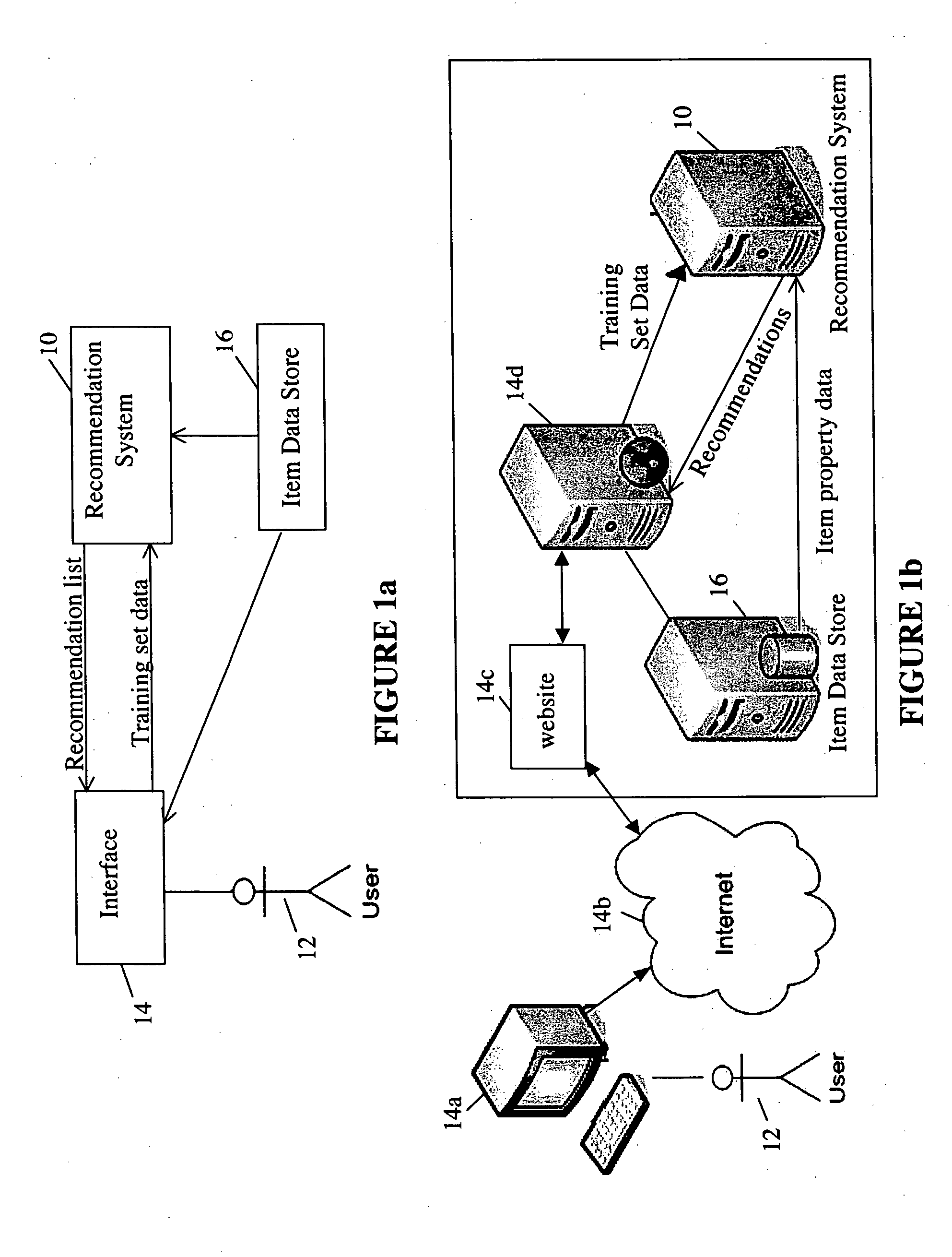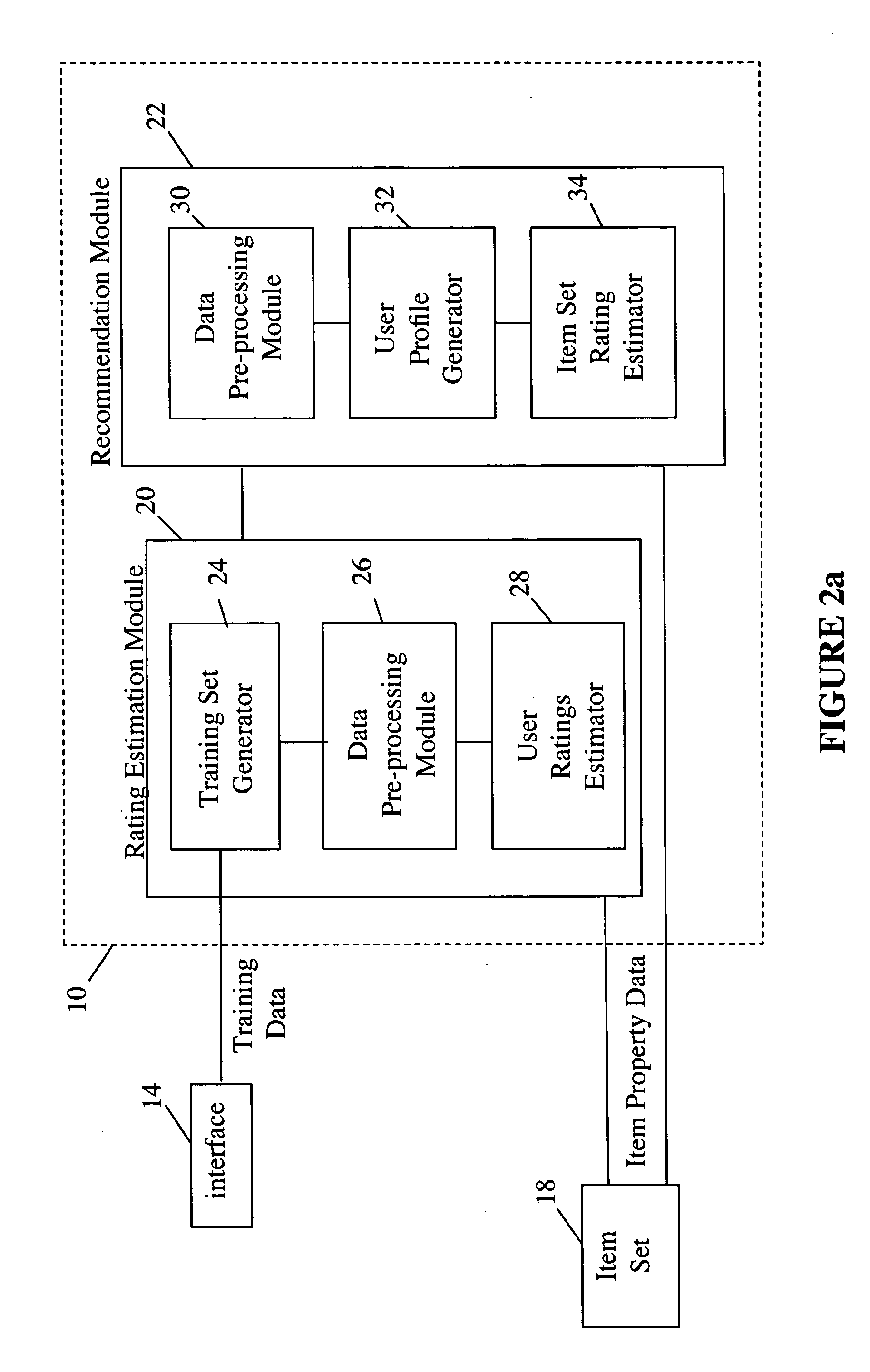System and method for estimating user ratings from user behavior and providing recommendations
a user behavior and user rating technology, applied in the field of system and method for providing recommendations, can solve the problems of not being able to examine all available alternatives, becoming increasingly difficult to find information or shop online, and being frustrated and unproductive in searching a repository of this siz
- Summary
- Abstract
- Description
- Claims
- Application Information
AI Technical Summary
Benefits of technology
Problems solved by technology
Method used
Image
Examples
Embodiment Construction
[0055] Numerous specific details are set forth in order to provide a thorough understanding of the invention. However, it will be understood by those of ordinary skill in the art that the invention may be practiced without these specific details. In other instances, well-known methods, procedures and components have not been described in detail so as not to obscure the invention.
[0056] The inventors have devised a recommendation system and a method for addressing the “recommendation problem” in which, given a user, u, and a set of items in an item set, the user's rating of some or all of the items in the item set on some dimension are estimated, and some of the items in the item set are placed in a list of recommended items based on the estimated ratings. That is, the first item in the list of recommended items is the item for which the estimated rating is highest; the second item in the list of recommended items is the item for which the estimated rating is second highest, and so ...
PUM
 Login to View More
Login to View More Abstract
Description
Claims
Application Information
 Login to View More
Login to View More - R&D
- Intellectual Property
- Life Sciences
- Materials
- Tech Scout
- Unparalleled Data Quality
- Higher Quality Content
- 60% Fewer Hallucinations
Browse by: Latest US Patents, China's latest patents, Technical Efficacy Thesaurus, Application Domain, Technology Topic, Popular Technical Reports.
© 2025 PatSnap. All rights reserved.Legal|Privacy policy|Modern Slavery Act Transparency Statement|Sitemap|About US| Contact US: help@patsnap.com



